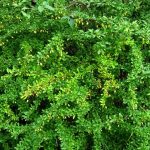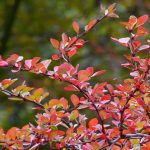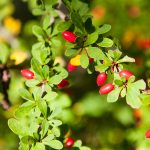Japanese Barberry
Identification:
Japanese barberry is a dense, deciduous, spiny shrub that grows 2 to 8 feet high. The branches are brown, deeply grooved, and bear a single very sharp spine at each node, below the leaf. Leaf color ranges from blue-green to green to dark reddish-purple. Japanese Barberry prefers full sun to part shade but can reproduce and succeed in full shade conditions. The berries, bright red in coloring, mature late summer and early fall and persist into the winter.
Once established in an area diversity decreases, creating a monoculture. Some stands become so thick that they can make natural barriers. Animals will avoid them and can no longer forage. White-tailed deer may avoid browsing on Japanese barberry, focusing more heavily on other species. This kind of feeding can give the barberry a competitive advantage because there are no native species to keep it in check. The plant also alters soil acidity and nitrogen levels, reducing the biological activity of native soils. Additionally, Japanese barberry can act as nursey for ticks, and an increase of barberry populations is linked to a higher incidence of Lyme disease carrying ticks.
Control:
A weed wrench would be good for this kind of plant. Hand pulling and using a shovel to remove plants up to about 3 foot high is effective if the root system is loosened up around the primary tap root first before digging out the whole plant. Use thick gloves as the plant has harmful spines. Make sure to bag all limbs that may contain berries to prevent the spread of the plant.



